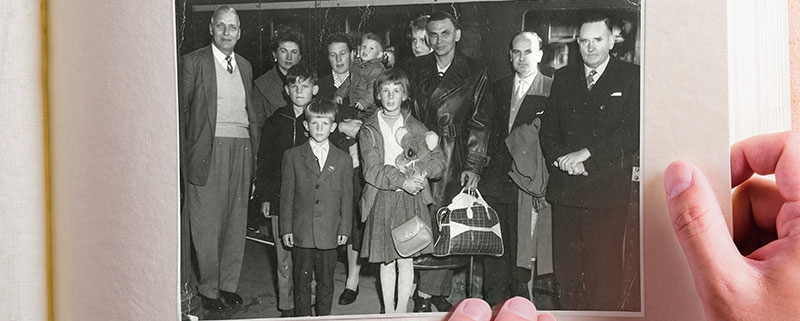Australian Lutheran World Service had its beginnings at the Bonegilla Migrant Centre, near Wodonga in Victoria, when Lutheran Pastor Bruno Muetzelfeldt began ministering to newly arrived migrants from war-ravaged Europe. Bonegilla operated from 1947 to 1971, accommodating more than 300,000 displaced persons and war refugees. Today, one in 20 Australians is thought to be descended from Bonegilla migrants and last year ALWS provided care to nearly 300,000 people across the globe. To follow are the reflections of some whose families were at Bonegilla. You can read more memories by members of the ALWS family at www.alws.org.au
‘I was six when I arrived at Bonegilla with my parents on 22 December 1948. My dad was Estonian and mum Latvian. We had left a cold European winter and were about to experience our first hot summer Christmas. My mum arrived wearing a fur coat! We came on the ship Protea with 700 passengers. We then travelled by train to Bonegilla. Our new home! Unlined Nissan huts. I remember the steps going up into the huts. They were very cold and very hot! I am truly thankful for our life in Australia. And it all began in Bonegilla and the kindnesses of so many, including Lutheran churches and ALWS.’
– Margrit Friebel (nee Schmidt)
‘The buildings were actual Nissan huts – curved corrugated-iron buildings, with no inner wall linings. I can remember Mum looking hot and fanning herself. She told me years later how much she hated the heat initially. Men often sat in groups. Probably smoking, playing cards and talking.’
– Ivar Schmidt
‘I was only 14 months old when we arrived from Italy, so my memories are my mum’s. When they first arrived, the hut they were placed in had wet mud floors and there was dried vomit still on the cot. Not such a welcoming start! On their wedding anniversary, Mum smuggled in a small gas burner to cook a special meal in their hut. She placed each part of the meal under the quilt covers to stay warm until all parts of the meal could be eaten together! So many at Bonegilla were carrying scars from World War II. It is the grandchildren who have really reaped the benefits of their decision to come to Australia and from their hard work.’
– Barbara Mann
‘Dad shared how he felt sad for the people arriving by train, often at night, at a little siding in the middle of nowhere and then being bussed to the camp. They would look so lost, with their suitcases and children clutching their hands. It would move him to tears. He said, “All I want to do is to do good for these people, for they will be the next generation to build our country”. The people were always so grateful. This was a new opportunity after the harrowing times of the war.’
– Elizabeth Stolz, daughter of Pastor Norman Sander
‘As I was only a toddler, my “recollections” of life at Bonegilla come from my parents. Due to World War II and the dire economic situation, my parents were devastated that they couldn’t return to Hungary; their only hope was to emigrate to Australia. My parents struggled with being so far from their families, but making friends with other migrants made life somewhat tolerable. The food was so bland that it left Mum with a life-long aversion to lamb! Mum and I were in Bonegilla for four months and joined Dad in Geelong where he had found work and accommodation.’
– Pastor Ernie Kiss
‘The language of love prevailed in spite of general language difficulties … We were not concerned as to what religion the people followed, we all just wanted to help them in their need. In adopting this attitude, we were sure of doing a Christ-like thing.’
– LCA Pastor Norman G Sander, chaplain Bonegilla Migrant Centre, 1960–1970
About Bonegilla Migrant Camp
- The name comes from the Aboriginal word for ‘deep water hole’
- It operated from 1947–1971
- The camp welcomed 309,000 displaced persons and war refugees
- People at Bonegilla were from 50 countries, mostly non-English speaking
- There were 24 accommodation blocks, each with a kitchen, mess hut, shower and toilet
- Men and women were in separate quarters
- There were 800 buildings with a capacity of 7700 beds by 1950
In 2020 around the world
You are part of a global effort helping 1,432,865 displaced people …
… from Somalia, South Sudan, across eastern Africa, Myanmar, Syria, Bhutan …
… in Kenya, South Sudan, Bangladesh, Jordan, Nepal and Myanmar.


